baues + partner is using a new building project by Gottschall + Sohn KG in Grevenbroich as a test project for an end-to-end BIM process with ALLPLAN, FRILO, Archicad and Solibri.
BIM is not software, but a working method - as demonstrated by the ultra-modern multifunctional building that will soon be built on the premises of Gottschall & Sohn KG (part of the GC Group). The multi-disciplinary consultancy baues + partner is responsible for the architecture, structural design as well as thermal, sound and fire protection in the project and took the construction project as an opportunity to test BIM as a comprehensive design method. Owner Dr. Stefan Baues provides insights into the multi-layered BIM planning process.
The multifunctional building extends the headquarters of Gottschall & Sohn KG in Grevenbroich in the Lower Rhine region. In addition to extensive new training and seminar rooms, the specialist wholesaler for technical building equipment will also have a bathroom products exhibition for retail customers and a canteen with a kitchen. A children's daycare center for the city of Grevenbroich is also planned.
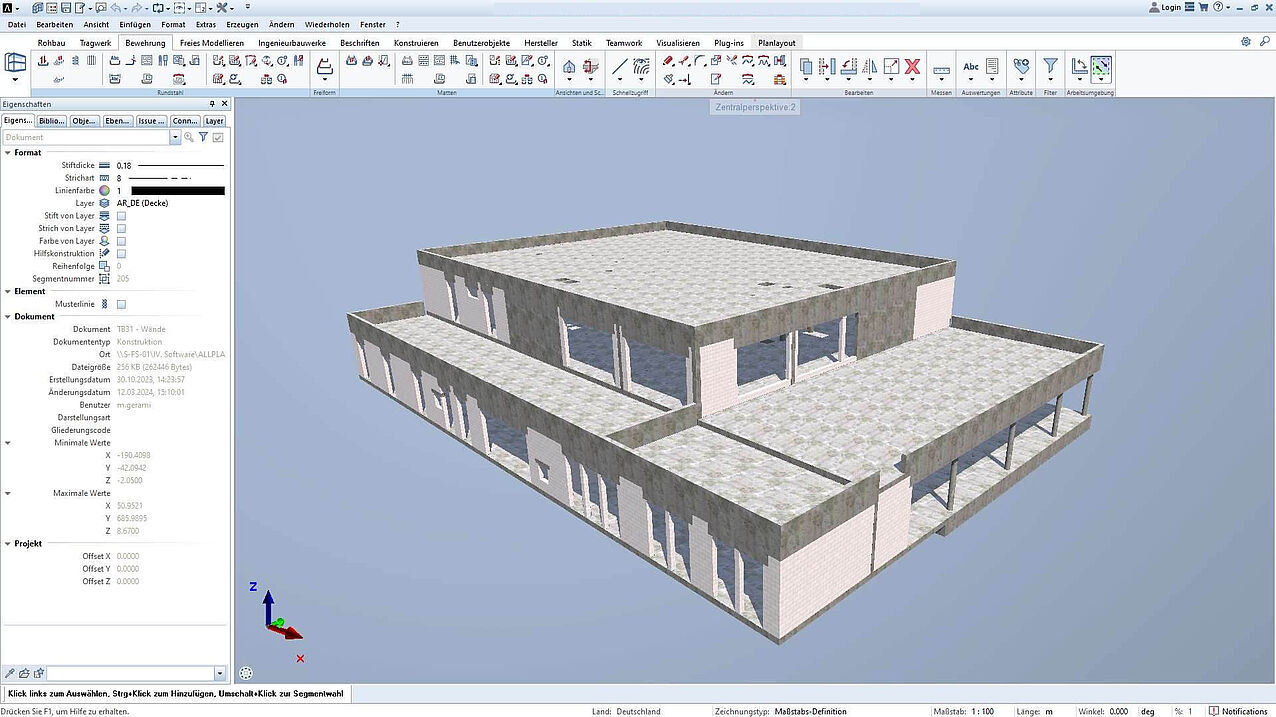
baues + partner take over building planning
In addition to the architecture (including interior design), baues + partner also took on the structural design, sound and thermal insulation as well as the implementation of the fire protection requirements for the building. It is designed as a two-story reinforced concrete skeleton structure with a load-bearing reinforced concrete floor slab. Stabilization is provided by reinforced concrete wall panels that run across both floors. The different areas of use are separated by masonry walls, depending on the requirements for sound insulation and fire protection.
Dr.-Ing. Stefan Baues, Managing Director of baues + partner, believes he knows why he was awarded the contract by Gottschall & Sohn KG: "The multifunctional building may not be huge, but it is a very advanced structure. In our office, we took this as an opportunity to take a new, progressive approach to the design method. For the first time, we planned a project using BIM throughout."
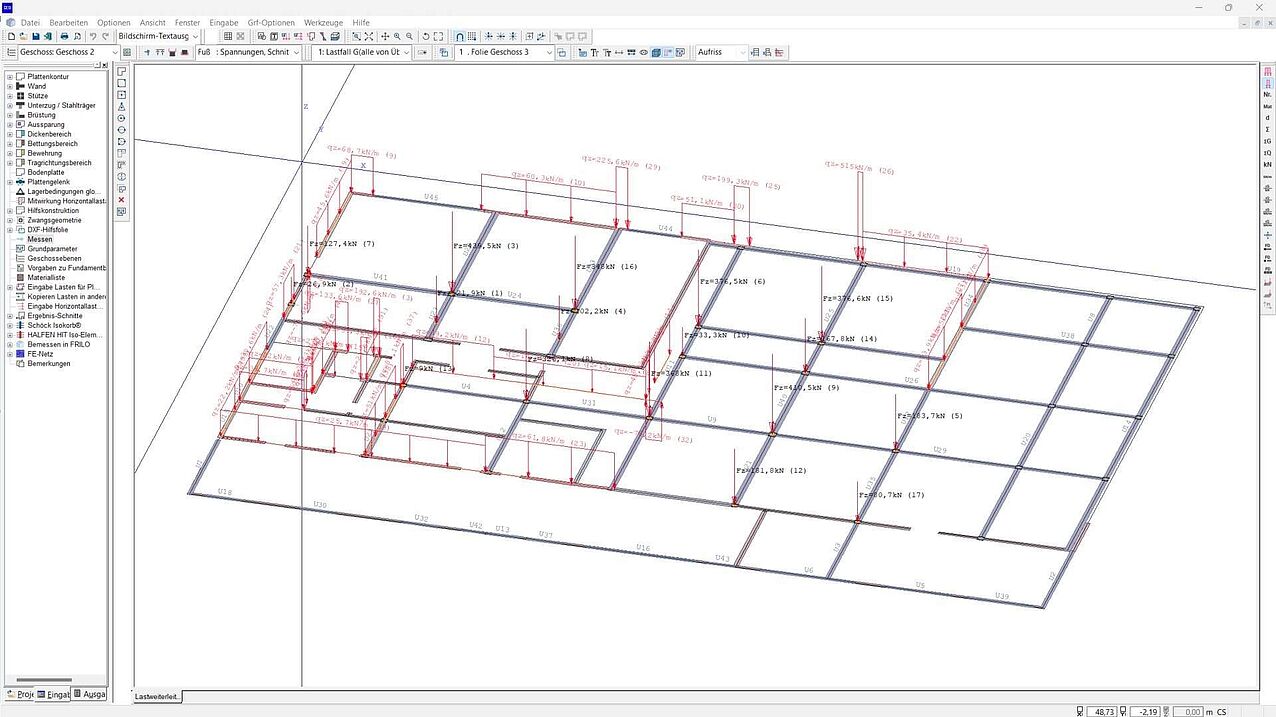
Lighthouse project for BIM planning
The client was impressed by this concept. In order to be able to optimally implement the BIM planning methodology in the office, Stefan Baues went through the four modules of the "BIM Standard of German Chambers of Architects and Engineers" qualification program in preparation for project planning.
"The program taught me that the BIM planning process is more than just filling building models with information," explains the engineer. "Rather, you have to think about how you organize your document, issue and BIM management. It is important to clearly define communication channels between all those involved in design and the responsibilities of those involved in planning." He sees the multifunctional building as a project that is ideally suited to putting what he has learned into practice.
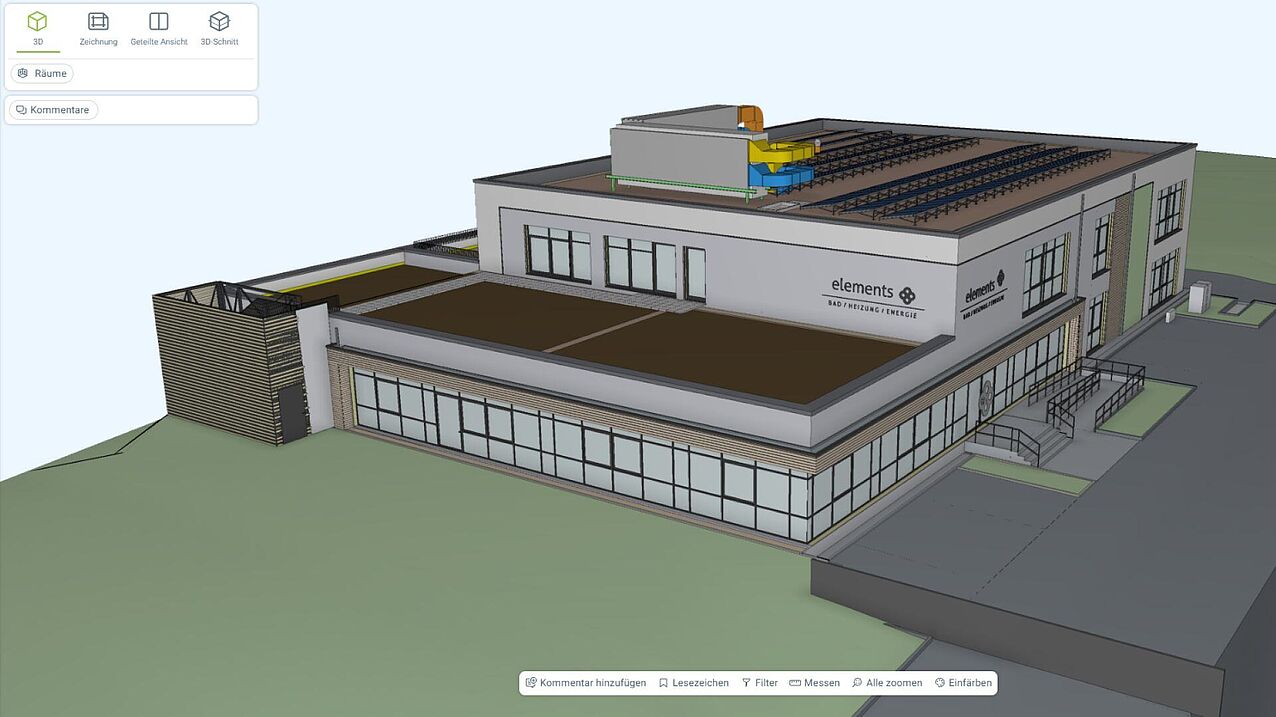
Organization of the BIM process in the office
In order to implement BIM in accordance with your own objectives, fixed structures and a clear distribution of tasks are necessary. At baues + partner, there are trained employees in the specialist disciplines of architecture and structural engineering who create the various models manually using the appropriate software. There are also project managers for each discipline. They are present at the preliminary meetings and influence the concept in the interests of the specialist discipline they represent.
"The challenge with the BIM method is to bring together those who have the specialist knowledge with those who have mastered the programs and software," says Stefan Baues, who knows from his own experience that it is a long way until the desired planning processes are actually mapped in the office. This is why he now also employs an overall information coordinator in his company. This person checks all models, coordinates the overall project and is in constant contact with the project managers from the individual specialist disciplines.
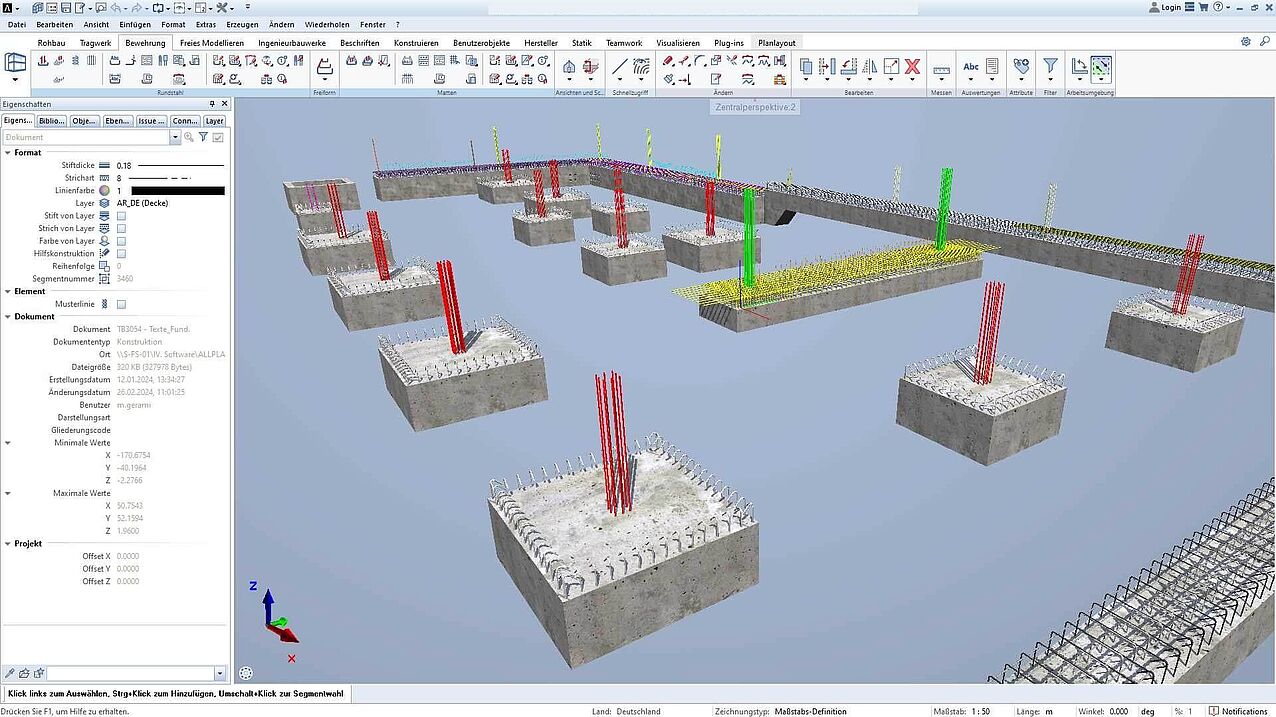
Transfer to BIM-Connector for structural analysis with FRILO
An architectural model in Archicad including a structural analysis model served as the design basis for the BIM project. Once the preliminary designs had been completed, the latter was exported as an SAF file and transferred to the BIM-Connector® of FRILO for the structural analysis of the structure. The responsible structural engineer then edited the 3D model in FRILO to ensure a clean load transfer later on.
The revised structural analysis model was then transferred to FRILO's GEO building model, in which the structural engineer determined both the vertical load transfer and the earthquake loads. The corresponding special programs from FRILO, such as the PLT slab program or the B5+ reinforced concrete column program, were used for the structural analysis of the slabs and beams as well as the verification of concrete walls and columns and for the masonry walls.
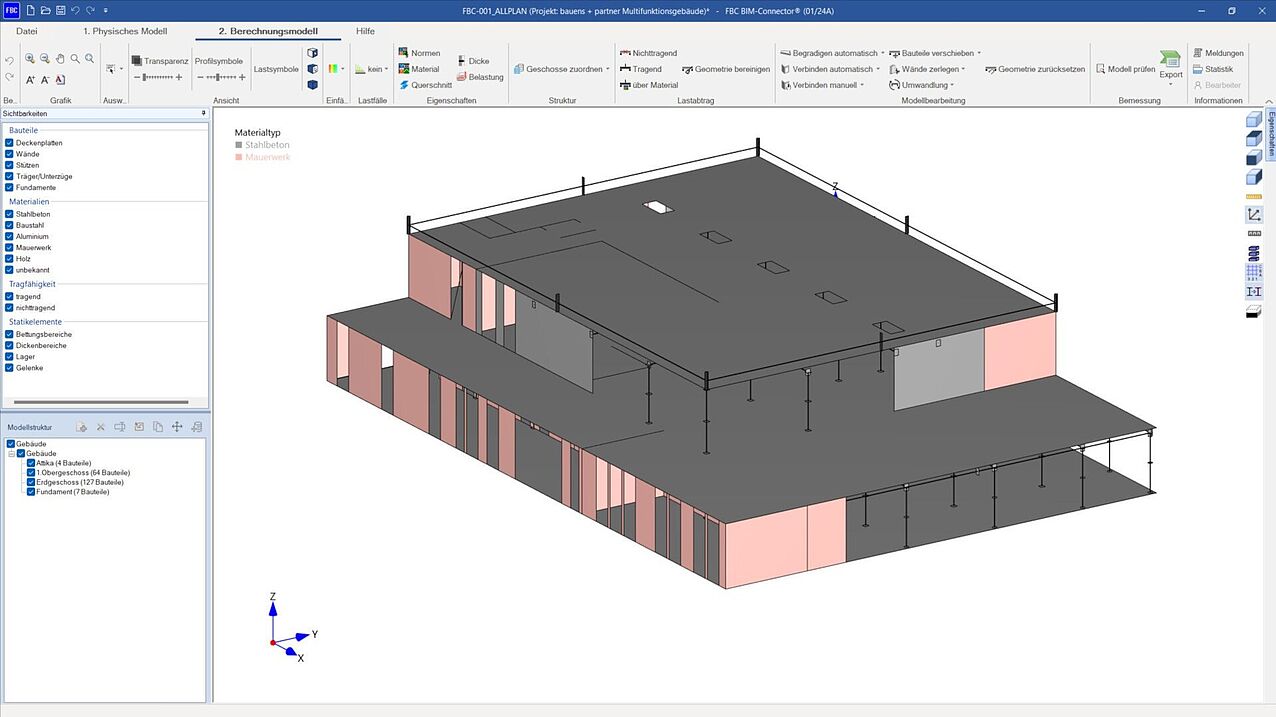
Complete execution planning with ALLPLAN
As soon as the first calculation results from FRILO were available for the pre-dimensioning, the draftsmen began to create the structural design model as the basis for the subsequent structural overview drawings in ALLPLAN. Stefan Baues explains: "In structural design, we also need a structural drawing as the result of a verifiable structural analysis. To do this, we create the structural design specialist model in ALLPLAN at an early stage at the end of work phase 2."
All the structural analysis results determined in FRILO were continuously incorporated into this specialist model. As soon as the position plan was ready, the baues + partner team created the first general arrangement plans in ALLPLAN. To do this, they superimposed the two specialist models, architecture and structural design, to check whether all components and openings had been placed correctly. Based on the general arrangement drawings, the reinforcement drawings for the floor slab, columns, ceilings and beams as well as the steel drawings for the emergency staircase and some steel canopies with timber cladding were then also created in ALLPLAN.
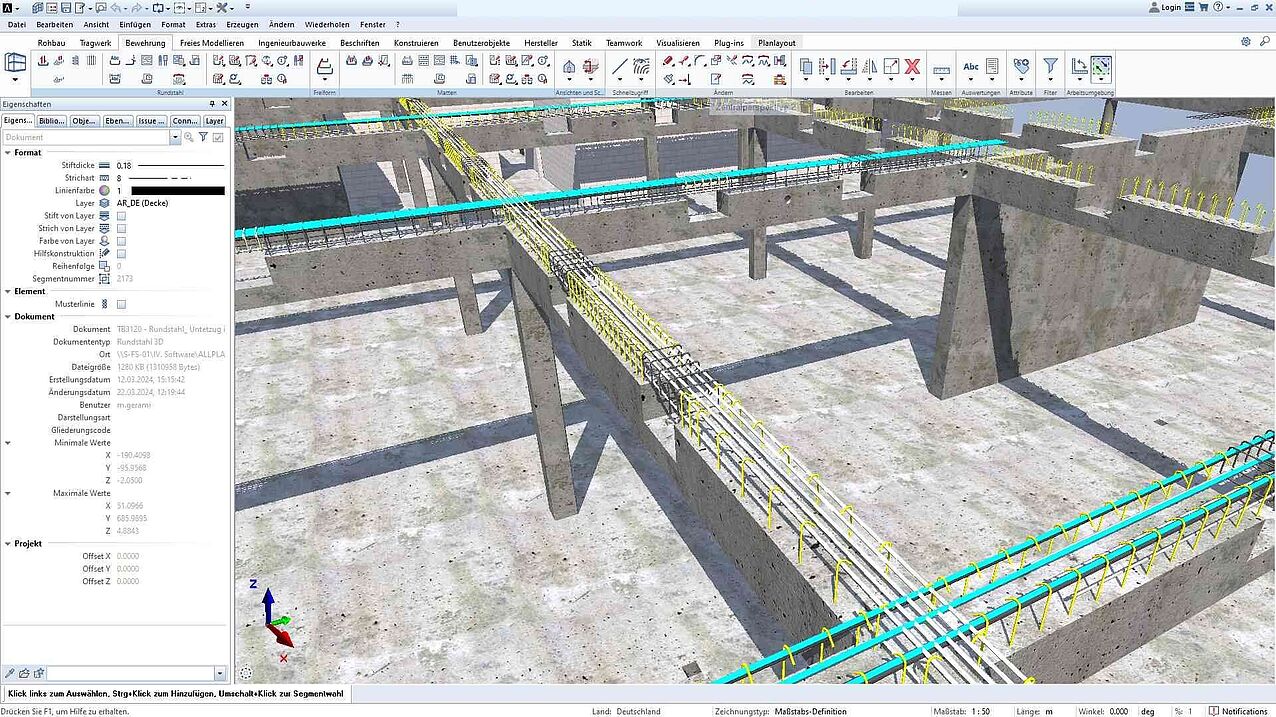
Collision check in Solibri
Once the structural calculations have been completed, the structural engineer checks whether the architect's design assumptions with regard to the dimensions and use of the components are correct and, if necessary, makes adjustments to the model in ALLPLAN. To identify any discrepancies between the original model from Archicad and the adapted model from ALLPLAN, baues + partner used Solibri. There, the models were superimposed in the Model Checker and checked for collisions. Issues were created for the collisions and discrepancies and shared with the architect in a BCF report. This ensured that the same information was stored in all models.





